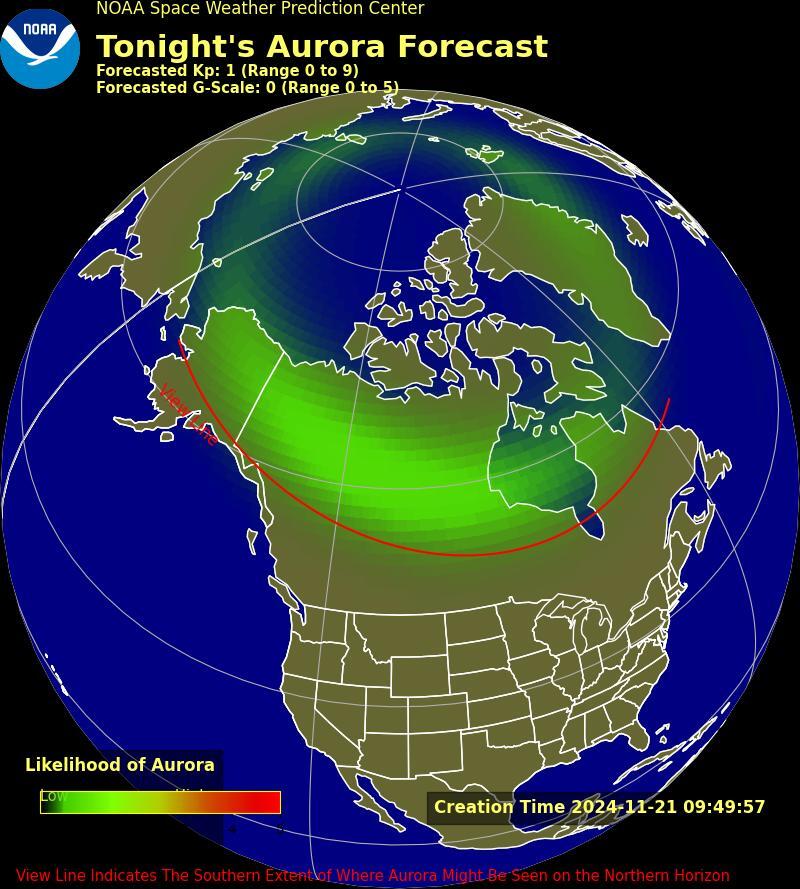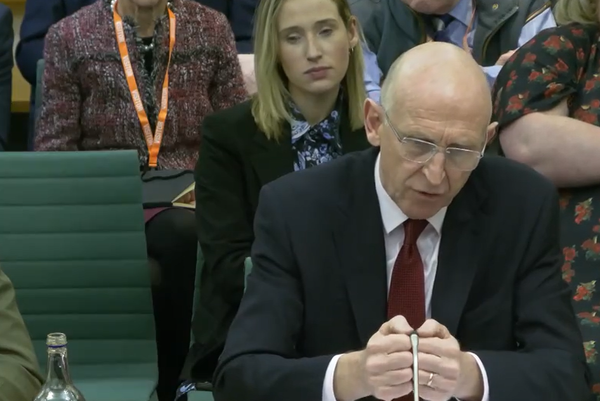
Auroras are one of the most dazzling shows in the night sky, but to see them, you have to be in the right place at the right time.
Our aurora forecast live blog tells you everything you need to know about upcoming geomagnetic activity and the likelihood of seeing the northern lights depending on your location. We will also keep you informed of any significant space weather events such as coronal mass ejections (CMEs) and coronal holes which could bring strong aurora-sparking solar winds our way.
REMEMBER: The Kp index is important, with a higher Kp indicating stronger auroral activity. A key ingredient of aurora activity is the Bz value of the Interplanetary Magnetic Field, which can be easily viewed on SpaceWeatherLive.com. You're ideally looking for a strong "south" Bz which means it will connect with Earth's magnetosphere which points northward. A strong southward Bz can wreak havoc with Earth's magnetic field and send particles raining down through the atmosphere along magnetic field lines. When these energized particles collide with atoms in Earth's atmosphere they release the light we see as auroras. If there is a strong southward Bz, your chances of seeing auroras increase significantly.
Best year for auroras | Aurora colors | Aurora myths | Where to see
Monday, Nov. 8: Quiet sun but aurora sightings possible at high latitudes
Today there is a good possibility of seeing the northern lights at high latitudes primarily above the Arctic Circle. A maximum Kp of around 3 Kp is predicted for tonight from around 1:00 - 7:00 p.m. EST (1800-0000 GMT), according to the National Oceanic and Atmospheric Administration (NOAA)'s Space Weather Prediction Center. This could bring unsettled aurora activity in high latitudes.
A large Earth-facing coronal hole could also bring an increase in geomagnetic activity over the coming days. When directed at Earth, the stream of solar wind flowing from a coronal hole can impact Earth's magnetosphere, triggering geomagnetic storm conditions and resulting in impressive aurora displays.
The sun has been rather quiet of late, but if it unleashes a powerful solar flare (either M or X class) accompanied by a coronal mass ejection (CME) in the coming days, we could be in for an aurora treat. CMEs are large plumes of plasma and magnetic field that erupt from the sun. When they collide with Earth they can trigger geomagnetic storms which in turn lead to dramatic auroras.
Current solar flare predictions for today courtesy of SpaceWeatherLive.com
M-class solar flare: 50%
X-class solar flare: 10%
Tuesday, Nov. 19: Low Kp predicted but active sun could spell good conditions for later in the week
Today there is still a good chance of seeing the northern lights at high latitudes primarily above the Arctic Circle, despite lower Kp predictions compared to yesterday. A maximum Kp of around 2 is predicted for tonight from around 4 - 7 p.m. EST (2100-0000 GMT), according to the National Oceanic and Atmospheric Administration (NOAA)'s Space Weather Prediction Center. This could bring unsettled aurora activity in high latitudes.
A large coronal hole continues to face Earth and may trigger increased geomagnetic activity over the coming days. When directed at Earth, the stream of solar wind flowing from a coronal hole can impact Earth's magnetosphere, triggering geomagnetic storm conditions and resulting in impressive aurora displays.
The sun appears to be "waking up" from a brief hiatus in solar activity, unleashing nine M-class solar flares yesterday. A majority of the flares originated from a newly emerging sunspot group AR3901. The sunspot is turning toward Earth which means if it unleashes a powerful solar flare (either M or X class) accompanied by a coronal mass ejection (CME) in the coming days, we could be in for an aurora treat. CMEs are large plumes of plasma and magnetic field that erupt from the sun. When they collide with Earth they can trigger geomagnetic storms which in turn lead to dramatic auroras.
Current solar flare predictions for today courtesy of SpaceWeatherLive.com
M-class solar flare: 55%
X-class solar flare: 10%

Wednesday Nov. 20: Auroras possible at high latitudes despite relatively quiet sun
Even with low Kp predictions, there’s still a good opportunity to spot the northern lights today at high latitudes, particularly in areas above the Arctic Circle.
A maximum Kp of around 1.7 is currently predicted for tonight from around 7-10 p.m. EST (0000-0300 GMT on Nov.21), according to the NOAA's Space Weather Prediction Center.
Tonight's aurora activity could also be fuelled by a significant coronal hole that remains pointed toward Earth. Solar wind streams from coronal holes can interact with the planet's magnetosphere, potentially causing geomagnetic storms and creating stunning aurora displays. So while the Kp index is low, there is still a possibility of a nice show at high latitudes this evening.
While geomagnetic activity is forecasted to remain relatively low in the coming days, this could quickly change with the eruption of a coronal mass ejection (CME), potentially resulting in striking auroral displays. CMEs are enormous eruptions of plasma and magnetic energy released from the sun, often associated with powerful solar flares. Upon reaching Earth, they can induce geomagnetic storm conditions that give rise to breathtaking auroras. We will be sure to update you if any eruptions give rise to Earth-directed CMEs!
Current solar flare predictions for today courtesy of SpaceWeatherLive.com
M-class solar flare: 50%
X-class solar flare: 10%

Thursday, Nov. 21: Quiet aurora activity but conditions improving
Despite low Kp predictions, there’s still a possibility to see the northern lights today at high latitudes, particularly in areas above the Arctic Circle.
A maximum Kp of around 2 is currently predicted for tonight from around 7-10 p.m. EST (0000-0300 GMT on Nov.22), according to the NOAA's Space Weather Prediction Center. Kp's of 2 are not uncommon but it is a slight improvement on yesterday's forecast.
We could see a slight bump in aurora activity by the Earth-directed coronal hole that is currently present on the sun. However, it has shrunk significantly in the last few days and will not face Earth for much longer. But we constantly monitor the sun for other significant coronal hole formations. Solar wind streams from coronal holes can interact with the planet's magnetosphere, potentially causing geomagnetic storms and creating stunning aurora displays.
We could see a better aurora forecast tomorrow with maximum Kps of around 3 currently predicted.
While the forecast is still not too promising we need to remember that this can all change very quickly if the sun erupts with a coronal mass ejection (CME). CMEs are powerful eruptions of plasma and magnetic field from the sun, when Earth-directed they can slam into our magnetosphere and trigger geomagnetic storm conditions which in turn can lead to fantastic aurora displays. CMEs often accompany powerful solar flare eruptions (M or X class) so we will be sure to update you if any eruptions give rise to Earth-directed CMEs!
Current solar flare predictions for today courtesy of SpaceWeatherLive.com
M-class solar flare: 50%
X-class solar flare: 10%








